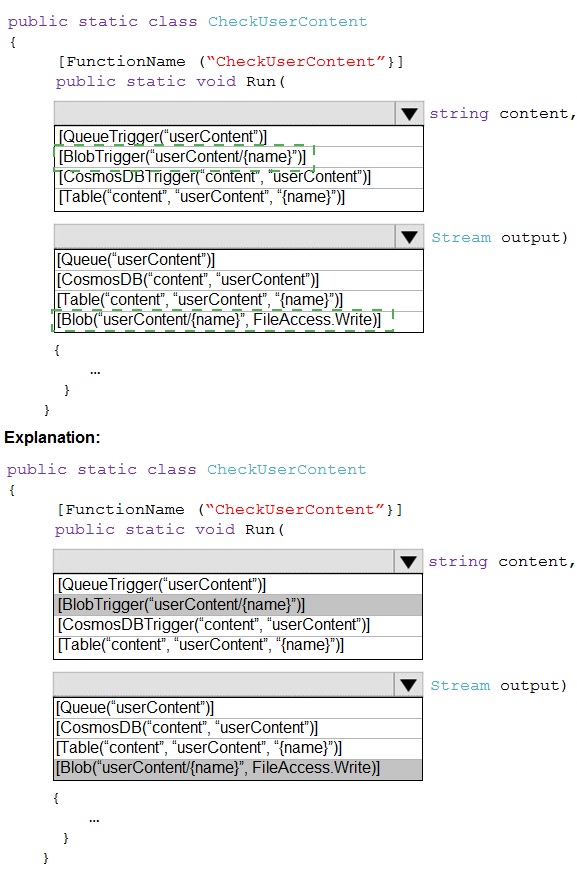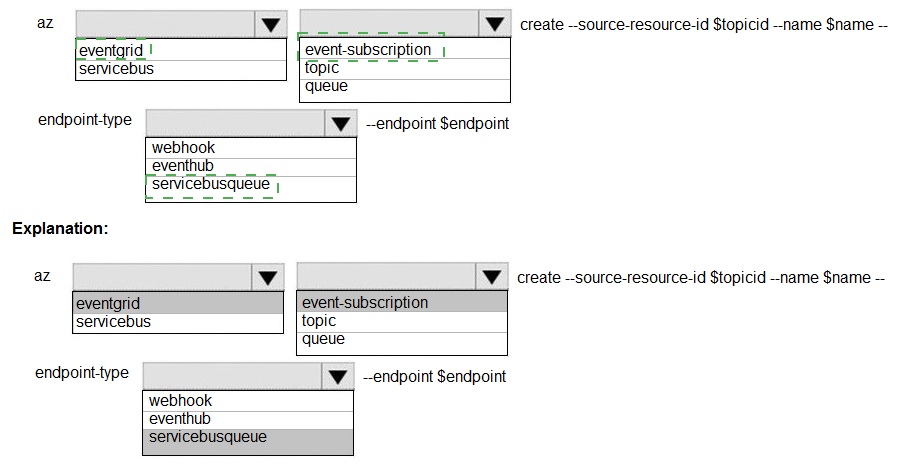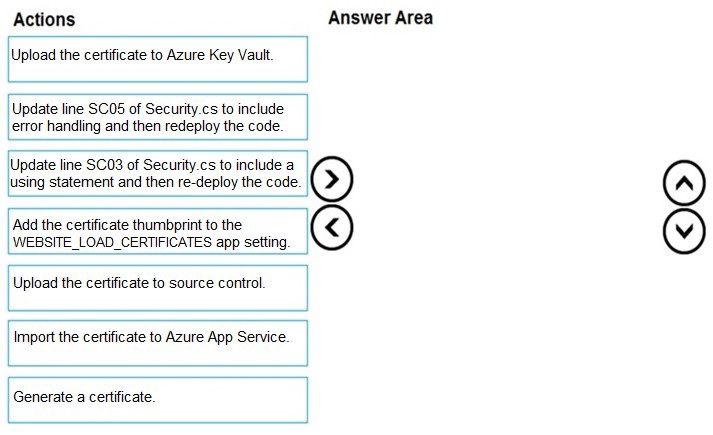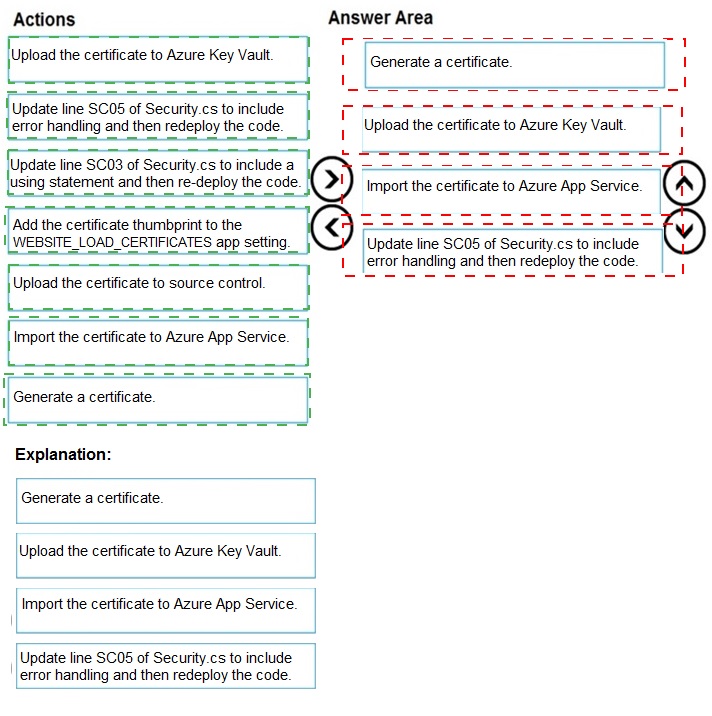
- Email support@dumps4free.com

Topic 2, Contoso, Ltd
Case study
This is a case study. Case studies are not timed separately. You can use as much
exam time as you would like to complete each case. However, there may be additional ase studies and sections on this exam. You must manage your time to ensure that you
are able to complete all questions included on this exam in the time provided.
To answer the questions included in a case study, you will need to reference information
that is provided in the case study. Case studies might contain exhibits and other resources
that provide more information about the scenario that is described in the case study. Each
question is independent of the other questions in this case study.
At the end of this case study, a review screen will appear. This screen allows you to review
your answers and to make changes before you move to the next section of the exam. After
you begin a new section, you cannot return to this section.
To start the case study
To display the first question in this case study, click the Next button. Use the buttons in the
left pane to explore the content of the case study before you answer the questions. Clicking
these buttons displays information such as business requirements, existing environment,
and problem statements. When you are ready to answer a question, click the Question
button to return to the question.
Background
Overview
You are a developer for Contoso, Ltd. The company has a social networking website that is
developed as a Single Page Application (SPA). The main web application for the social
networking website loads user uploaded content from blob storage.
You are developing a solution to monitor uploaded data for inappropriate content. The
following process occurs when users upload content by using the SPA:
• Messages are sent to ContentUploadService.
• Content is processed by ContentAnalysisService.
• After processing is complete, the content is posted to the social network or a rejection
message is posted in its place.
The ContentAnalysisService is deployed with Azure Container Instances from a private
Azure Container Registry named contosoimages.
The solution will use eight CPU cores.
Azure Active Directory
Contoso, Ltd. uses Azure Active Directory (Azure AD) for both internal and guest accounts.
Requirements
ContentAnalysisService
The company’s data science group built ContentAnalysisService which accepts user
generated content as a string and returns a probable value for inappropriate content. Any
values over a specific threshold must be reviewed by an employee of Contoso, Ltd.
You must create an Azure Function named CheckUserContent to perform the content
checks.
Costs
You must minimize costs for all Azure services.
Manual review
To review content, the user must authenticate to the website portion of the
ContentAnalysisService using their Azure AD credentials. The website is built using React
and all pages and API endpoints require authentication. In order to review content a user
must be part of a ContentReviewer role. All completed reviews must include the reviewer’s
email address for auditing purposes.
High availability
All services must run in multiple regions. The failure of any service in a region must not
impact overall application availability.
Monitoring
An alert must be raised if the ContentUploadService uses more than 80 percent of
available CPU cores.
Security
You have the following security requirements:
Any web service accessible over the Internet must be protected from cross site
scripting attacks.
All websites and services must use SSL from a valid root certificate authority.
Azure Storage access keys must only be stored in memory and must be available
only to the service.
All Internal services must only be accessible from internal Virtual Networks
(VNets).
All parts of the system must support inbound and outbound traffic restrictions.
All service calls must be authenticated by using Azure AD.
User agreements
When a user submits content, they must agree to a user agreement. The agreement allows
employees of Contoso, Ltd. to review content, store cookies on user devices, and track
user’s IP addresses.
Information regarding agreements is used by multiple divisions within Contoso, Ltd.
User responses must not be lost and must be available to all parties regardless of
individual service uptime. The volume of agreements is expected to be in the millions per
hour.
Validation testing
When a new version of the ContentAnalysisService is available the previous seven days of
content must be processed with the new version to verify that the new version does not
significantly deviate from the old version.
Issues
Users of the ContentUploadService report that they occasionally see HTTP 502 responses
on specific pages.
Code
ContentUploadService

You need to implement the bindings for the CheckUserContent function.
How should you complete the code segment? To answer, select the appropriate options in
the answer area.
NOTE: Each correct selection is worth one point.


Box 1: [BlobTrigger(..)]
Box 2: [Blob(..)]
Azure Blob storage output binding for Azure Functions. The output binding allows you to modify and delete blob storage data in an Azure Function.
The attribute's constructor takes the path to the blob and a FileAccess parameter indicating
read or write, as shown in the following example:
[FunctionName("ResizeImage")]
public static void Run(
[BlobTrigger("sample-images/{name}")] Stream image,
[Blob("sample-images-md/{name}", FileAccess.Write)] Stream imageSmall)
{
}
Scenario: You must create an Azure Function named CheckUserContent to perform the
content checks.
The company’s data science group built ContentAnalysisService which accepts user
generated content as a string and returns a probable value for inappropriate content. Any
values over a specific threshold must be reviewed by an employee of Contoso, Ltd.
You need to configure the ContentUploadService deployment.
Which two actions should you perform? Each correct answer presents part of the solution.
NOTE: Each correct selection is worth one point.
A.
Add the following markup to line CS23:
types: Private
B.
Add the following markup to line CS24:
osType: Windows
C.
Add the following markup to line CS24:
osType: Linux
D.
Add the following markup to line CS23:
types: Public
Add the following markup to line CS23:
types: Private
Explanation:
Scenario: All Internal services must only be accessible from Internal Virtual Networks
(VNets)
There are three Network Location types – Private, Public and Domain
Reference:
https://devblogs.microsoft.com/powershell/setting-network-location-to-private/
You need to configure the integration for Azure Service Bus and Azure Event Grid.
How should you complete the CLI statement? To answer, select the appropriate options in
the answer area.
NOTE: Each correct selection is worth one point.


Box 1: eventgrid
To create event subscription use: az eventgrid event-subscription create
Box 2: event-subscription
Box 3: servicebusqueue
Scenario: Azure Service Bus and Azure Event Grid
Azure Event Grid must use Azure Service Bus for queue-based load leveling.
Events in Azure Event Grid must be routed directly to Service Bus queues for use in
buffering.
Events from Azure Service Bus and other Azure services must continue to be routed to
Azure Event Grid for processing.
You need to correct the corporate website error.
Which four actions should you recommend be performed in sequence? To answer, move
the appropriate actions from the list of actions to the answer area and arrange them in the
correct order.


Scenario: Corporate website
While testing the site, the following error message displays:
CryptographicException: The system cannot find the file specified.
Step 1: Generate a certificate
Step 2: Upload the certificate to Azure Key Vault
Scenario: All SSL certificates and credentials must be stored in Azure Key Vault.
Step 3: Import the certificate to Azure App Service
Step 4: Update line SCO5 of Security.cs to include error handling and then redeploy the
code
You need to correct the RequestUserApproval Function app error.
What should you do?
A.
Update line RA13 to use the async keyword and return an HttpRequest object value.
B.
Configure the Function app to use an App Service hosting plan. Enable the Always On
setting of the hosting plan.
C.
Update the function to be stateful by using Durable Functions to process the request
payload.
D.
Update the functionTimeout property of the host.json project file to 15 minutes.
Update the function to be stateful by using Durable Functions to process the request
payload.
Async operation tracking
The HTTP response mentioned previously is designed to help implement long-running
HTTP async APIs with Durable Functions. This pattern is sometimes referred to as the
polling consumer pattern.
Both the client and server implementations of this pattern are built into the Durable
Functions HTTP APIs.
Function app
You perform local testing for the RequestUserApproval function. The following error
message displays:
'Timeout value of 00:10:00 exceeded by function: RequestUserApproval'
The same error message displays when you test the function in an Azure development
environment when you run the following Kusto query:
FunctionAppLogs
| where FunctionName = = "RequestUserApproval"
References:
https://docs.microsoft.com/en-us/azure/azure-functions/durable/durable-functions-httpfeatures
| Page 4 out of 55 Pages |
| Previous |